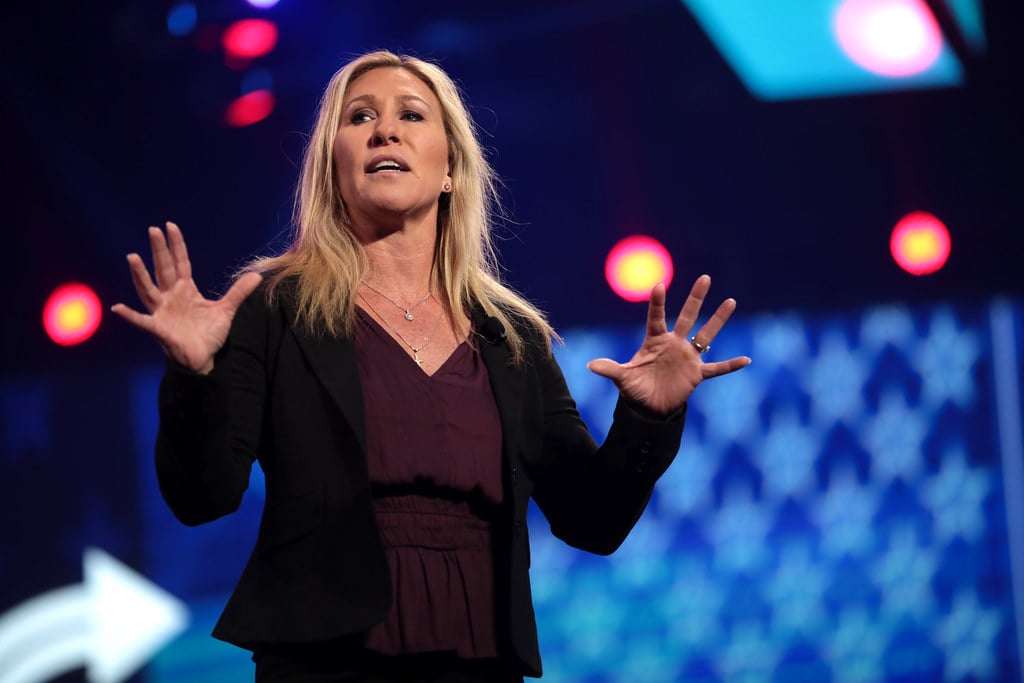Key takeaways
• Rep. Marjorie Taylor Greene accuses Trump of gaslighting voters on rising prices
• President Trump insists affordability is getting better under his leadership
• Recent polls show 54% of Americans think the economy is worsening
• Even former advisor Stephen Moore admits people don’t feel cost relief
Rep. Marjorie Taylor Greene broke ranks with President Trump over affordability. She told Sean Spicer’s show that claiming prices have fallen is “gaslighting voters.” She said people see higher grocery, clothing, and utility bills every day. That disconnect is fueling frustration across the country.
Why affordability becomes a hot topic
Affordability plays a big role in how Americans view the economy. When prices rise, families feel each dollar stretching thinner. Therefore, talk of lower costs can sound out of touch. Moreover, most voters check prices at the store, not in news reports. Consequently, any claim that rows of goods cost less feels unreal to many.
Greene pointed out that voters know what they spend on essentials. She argued that brushing off rising costs will not calm a worried public. Instead, she said, it infuriates people to hear prices are “way down” when receipts tell a different story.
What voters really feel at checkout
Polls confirm that many Americans share Greene’s frustration. A recent YouGov survey shows 54 percent believe the economy is getting worse. That number jumped 18 points since January. Meanwhile, 39 percent now call the economy poor, up eight points. These figures reveal a growing gap between official statements and everyday experience.
Families remember higher bills for food, gas, and rent. They also see steeper costs for school supplies and utility services. Even a small rise in price can strain a tight budget. As a result, people tend to focus on things costing more. They feel squeezed when paychecks don’t stretch as far.
Trump’s defense and his inflation message
President Trump continues to argue that costs are falling under his policies. He recently told reporters he did not “want to hear about affordability.” In the Oval Office, he said “costs are way down.” Last week, he declared that “affordability is much better with the Republicans.”
However, his words clash with public sentiment. Many voters simply don’t feel relief at checkout. In response, Greene accused him of gaslighting the public. She believes dismissing affordability concerns will only worsen voter frustration.
Even allies admit disconnect on affordability
Surprisingly, Trump’s former economic advisor also warns of a mismatch between data and feelings. Stephen Moore told NPR that families’ purchasing power rose since President Biden left office. Yet, he added, people “don’t feel it” and remain “crabby” about price hikes.
Moore’s point highlights a key issue. Data can show improvement, but perception matters most in politics. If voters don’t believe they have more spending power, they punish leaders at the polls. Therefore, recognizing public concerns becomes crucial for any campaign.
How affordability shapes political fortunes
Affordability issues often decide elections. When families struggle to buy essentials, they blame those in power. Politicians know that raising wages or cutting costs can boost support. Conversely, ignoring price worries can lead to voter backlash.
In this case, Greene’s bold critique signals internal party tension. It shows that even high-profile allies worry about the message on costs. Thus, the president faces pressure to address real-world pain points. He must connect his economic record with people’s daily lives.
Steps Trump could take to ease price pain
To bridge the gap, the president might offer targeted relief. For example, reducing tariffs on key imports could lower supply costs. Expanding tax credits for families with children can boost spending power. Streamlining regulations for energy production might cut utility bills.
Moreover, clear communication about policy wins can help. If a new measure trims grocery or gas prices, highlighting those examples can build trust. Active listening tours, where the president hears voters’ stories, could also improve his public image.
Looking ahead to voter reactions
Unless affordability concerns ease, economic optimism will remain fragile. Polls will likely keep tracking public mood and prices. If the gap between data and feelings stays wide, both parties will adjust their strategies.
For Trump’s team, the challenge is clear. They must show tangible cost savings, not just talk about them. Otherwise, critics like Marjorie Taylor Greene will continue to question their claims.
Affordability remains at the heart of the debate. As voters shop and pay bills, they will judge leaders on real-world numbers. If prices keep rising, politicians risk losing votes despite positive charts.
Frequently Asked Questions
What does affordability mean here?
Affordability refers to how easily families can afford everyday items like food, clothes, and utilities without financial strain.
Why did Marjorie Taylor Greene criticize Trump?
She accused him of gaslighting voters by downplaying rising prices and saying costs have fallen when people know they have not.
What do recent polls say about the economy?
One survey found 54 percent of Americans believe the economy is worsening, and 39 percent describe it as poor since Trump took office.
How does Stephen Moore view affordability claims?
He acknowledges that data shows more purchasing power for families, but he admits many people don’t feel that improvement.

